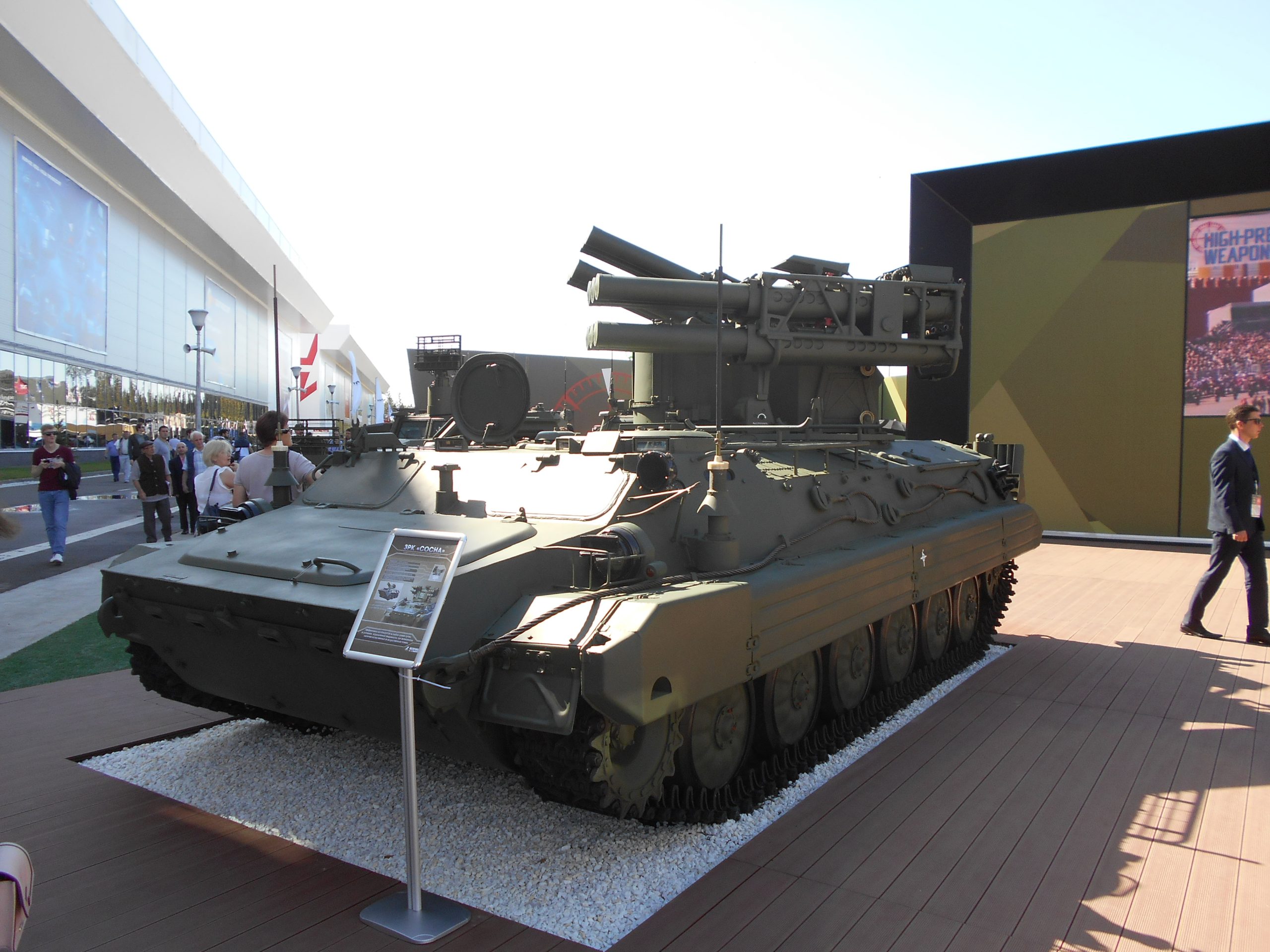
Russian anti-aircraft system Sosna
Pine on the march. On the sides of the optical-electronic head, you can see metal covers that protect the lenses from the gas jet of the rocket engine. Modified float platforms from the BMP-2 were installed above the tracks.
At the end of World War I, a new class of combat aircraft emerged. These were assault vehicles designed to support their own troops on the front lines, as well as to fight enemy ground forces. From today's point of view, their effectiveness was negligible, but they showed amazing resistance to damage - they were one of the first machines with a metal structure. The record holder returned to his native airport with almost 200 shots.
The effectiveness of stormtroopers from the Second World War was much higher, even if Hans-Ulrich Rudl's assurances of the destruction of over XNUMX tanks should be considered a gross exaggeration. At that time, to protect against them, mainly heavy machine guns and small-caliber automatic anti-aircraft guns were used, which are still considered an effective means of combating helicopters and even low-flying aircraft. Carriers of precision tactical air-to-ground weapons are a growing problem. Currently, guided missiles and gliders can be fired from distances far exceeding the range of small-caliber guns, and the probability of shooting down incoming missiles is negligible. Therefore, the ground forces need anti-aircraft weapons with a range greater than that of high-precision air-to-ground weapons. This task can be handled by medium-caliber anti-aircraft guns with modern ammunition or surface-to-air missiles.
In the Soviet Union, the air defense of the ground forces was given great importance, more than in any other country. After the war, its multi-tiered structures were created: direct defense amounted to 2-3 km of firepower, the extreme line of defense of the ground forces was separated by 50 km or more, and between these extremes there was at least one “middle layer”. The first echelon initially consisted of twin and quadruple 14,5 mm ZPU-2/ZU-2 and ZPU-4 guns, and then 23 mm ZU-23-2 guns and first-generation portable mounts (9K32 Strela-2, 9K32M "Strela-2M"), the second - self-propelled rocket launchers 9K31 / M "Strela-1 / M" with a firing range of up to 4200 m and self-propelled artillery mounts ZSU-23-4 "Shilka". Later, Strela-1 was replaced by 9K35 Strela-10 complexes with a firing range of up to 5 km and options for their development, and, finally, in the early 80s, 2S6 Tunguska self-propelled rocket-artillery mounts with two 30 -mm artillery mounts. twin guns and eight rocket launchers with a range of 8 km. The next layer was self-propelled guns 9K33 Osa (later 9K330 Tor), the next - 2K12 Kub (later 9K37 Buk), and the greatest range was the 2K11 Krug system, replaced in the 80s by 9K81 S-300V.
Although the Tunguska was advanced and efficient, it turned out to be difficult to manufacture and expensive, so they did not completely replace the previous generation Shilka / Strela-10 pairs, as it was in the original plans. The missiles for Strela-10 were upgraded several times (basic 9M37, upgraded 9M37M / MD and 9M333), and at the turn of the century even attempts were made to replace them with 9M39 missiles of the 9K38 Igla portable kits. Their range was comparable to 9M37/M, the number of missiles ready for launch was twice as large, but this decision disqualifies one aspect - the effectiveness of the warhead. Well, the weight of the Igla warhead is more than two times less than the 9M37 / M Strela-10 missiles - 1,7 versus 3 kg. At the same time, the probability of hitting a target is determined not only by the sensitivity and noise immunity of the seeker, but also by the effectiveness of the warhead, which grows in proportion to the square of its mass.
Work on a new missile belonging to the mass category 9M37 of the Strela-10 complex was started back in Soviet times. Its distinguishing feature was a different way of pointing. The Soviet military decided that even in the case of light anti-aircraft missiles, homing to a heat source was a "high risk" method - it was impossible to predict when the enemy would develop a new generation of jamming devices that would render such guided missiles completely ineffective. This happened with the 9M32 missiles of the 9K32 Strela-2 complex. At the turn of the 60s and 70s in Vietnam, they were extremely effective, in 1973 in the Middle East they proved to be moderately effective, and after a few years their effectiveness dropped to almost zero, even in the case of the upgraded 9M32M missile set Strela- 2M. In addition, there were alternatives in the world: radio control and laser guidance. The former was generally used for larger rockets, but there were exceptions, such as the British portable blowpipe. Guidance along the laser guide beam was first used in the Swedish installation RBS-70. The latter was considered the most promising in the USSR, especially since the slightly heavier 9M33 Osa and 9M311 Tunguska missiles had radio command guidance. A variety of missile guidance methods used in a multi-level air defense structure complicates enemy counteraction.